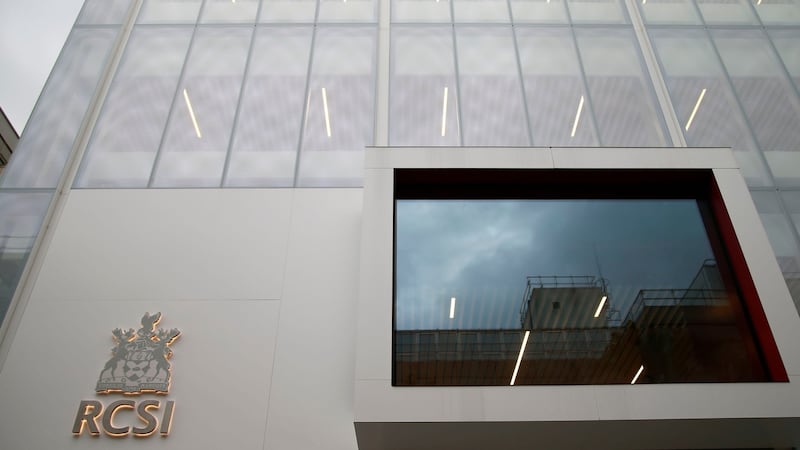Lucina lies in labour on a hospital bed screaming for an epidural even though she can feel no pain. She is Ireland's only "birthing mannequin", a €75,000 life-size robot bought to benefit surgical education at the Royal College of Surgeons in Ireland (RCSI).
The robot, one of many hi-tech tools at the new college building in Dublin, simulates a speeded-up, three-minute version of childbirth to maximise the number of students who can learn from her.
Demonstrated by senior lecturer Dr Karen Flood, the robot is anatomically accurate, wireless and with full-body "skin" and delivers a lifelike baby of realistic weight and proportion and a placenta. Students can even feel her "contractions".

Tucked away beside St Stephen’s Green, the new €80 million building at 26 York Street is designed to provide “professional healthcare training in multiple learning and study environments”.
Designed by Henry J Lyons Architects and built by Bennett Construction over the last three years, it claims to be the largest and most modern facility of its kind in Europe.
The new building complements the traditional 207-year old RCSI building on St Stephen's Green on the corner of York Street, creating a campus environment for 3,200 students of medicine, pharmacy and physiotherapy.
Four floors below road-level is a 540-seat auditorium and the college also has a large sports hall, a gym and a separate gym for women.
The 12,000sq ft simulation centre is laid out over three floors of the 10-storey building, where students have access to a surgical and training suite with clinical skills labs, a mock operating theatre and clinical training wards.
RCSI has used a simulation model since 2003 to teach at undergraduate level, but says the newly opened facilities "move postgraduate surgical training in Ireland to a new level".
Time capsule
An arresting time capsule art installation by Vanessa Donoso Lopez covers an entire wall, holding 448 bulla – clay vessels each containing a message.
The artist set up a studio in the college earlier this year and invited students to make their time capsule and to contribute a secret message outlining their hopes and wishes. That message, later etched on to a thin metal scroll, was then inserted into the bulla and each of them is housed in an acrylic box and hung on an interior wall.
Prof Hannah McGee, dean of the faculty of medicine and health sciences, says the aim is that in 40 years’ time in 2057, and perhaps towards the end of their careers, the students will gather for a reunion and open their time capsule.
“It is a metaphor for the RCSI as a custodian of the career aspirations of our students,” she says.
RCSI chief executive Prof Cathal Kelly said: “In a world where continuous professional development and reaccreditation is essential, these new facilities provide a national capacity for surgeons to refresh their skills and to avail of innovative techniques and international advancements. No 26 York Street represents a world class clinical learning environment, enabling a truly transformative clinical learning experience.”
The college is ranked among the top 250 (top 2 per cent) of universities worldwide in the Times Higher Education World University Rankings (2018). It is an international not-for-profit health sciences institution, with its headquarters in Dublin.






